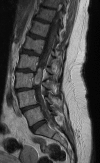Biology and management of ependymomas
- PMID: 27022130
- PMCID: PMC4896548
- DOI: 10.1093/neuonc/now016
Biology and management of ependymomas
Abstract
Ependymomas are rare primary tumors of the central nervous system in children and adults that comprise histologically similar but genetically distinct subgroups. The tumor biology is typically more associated with the site of origin rather than being age-specific. Genetically distinct subgroups have been identified by genomic studies based on locations in classic grade II and III ependymomas. They are supratentorial ependymomas with C11orf95-RELA fusion or YAP1 fusion, infratentorial ependymomas with or without a hypermethylated phenotype (CIMP), and spinal cord ependymomas. Myxopapillary ependymomas and subependymomas have different biology than ependymomas with typical WHO grade II or III histology. Surgery and radiotherapy are the mainstays of treatment, while the role of chemotherapy has not yet been established. An in-depth understanding of tumor biology, developing reliable animal models that accurately reflect tumor molecule features, and high throughput drug screening are essential for developing new therapies. Collaborative efforts between scientists, physicians, and advocacy groups will enhance the translation of laboratory findings into clinical trials. Improvements in disease control underscore the need to incorporate assessment and management of patients' symptoms to ensure that treatment advances translate into improvement in quality of life.
Keywords: Collaborative Ependymoma Research Network; ependymoma; management; molecular classification; rare disease.
Published by Oxford University Press on behalf of the Society for Neuro-Oncology 2016. This work is written by (a) US Government employee(s) and is in the public domain in the US.
Figures






Similar articles
-
Molecular characterization of histopathological ependymoma variants.Acta Neuropathol. 2020 Feb;139(2):305-318. doi: 10.1007/s00401-019-02090-0. Epub 2019 Nov 2. Acta Neuropathol. 2020. PMID: 31679042
-
Identification of relevant prognostic histopathologic features in 69 intracranial ependymomas, excluding myxopapillary ependymomas and subependymomas.Cancer. 2006 Jan 15;106(2):388-95. doi: 10.1002/cncr.21608. Cancer. 2006. PMID: 16342252
-
Diagnostics of pediatric supratentorial RELA ependymomas: integration of information from histopathology, genetics, DNA methylation and imaging.Brain Pathol. 2019 May;29(3):325-335. doi: 10.1111/bpa.12664. Epub 2018 Nov 28. Brain Pathol. 2019. PMID: 30325077 Free PMC article.
-
C11orf95-RELA fusion present in a primary intracranial extra-axial ependymoma: Report of a case with literature review.Neuropathology. 2016 Oct;36(5):490-495. doi: 10.1111/neup.12299. Epub 2016 Apr 28. Neuropathology. 2016. PMID: 27121356 Review.
-
Ependymoma.Crit Rev Oncol Hematol. 2007 Jul;63(1):81-9. doi: 10.1016/j.critrevonc.2007.03.004. Epub 2007 May 4. Crit Rev Oncol Hematol. 2007. PMID: 17482475 Review.
Cited by
-
Conditional survival estimates for ependymomas reveal the dynamic nature of prognostication.Discov Oncol. 2024 Sep 18;15(1):460. doi: 10.1007/s12672-024-01275-8. Discov Oncol. 2024. PMID: 39294501 Free PMC article.
-
Personalizing age-specific survival prediction and risk stratification in intracranial grade II/III ependymoma.Cancer Med. 2020 Jan;9(2):615-625. doi: 10.1002/cam4.2753. Epub 2019 Dec 3. Cancer Med. 2020. PMID: 31793749 Free PMC article.
-
Potential Molecular Targets in the Treatment of Patients with CNS Tumors.Cancers (Basel). 2023 Jul 27;15(15):3807. doi: 10.3390/cancers15153807. Cancers (Basel). 2023. PMID: 37568623 Free PMC article.
-
Building a dynamic web calculator for individualized conditional survival estimation in brainstem ependymoma.Sci Rep. 2025 Jul 29;15(1):27703. doi: 10.1038/s41598-025-12428-2. Sci Rep. 2025. PMID: 40730852 Free PMC article.
-
Use of Intraoperative Ultrasound to Achieve Gross Total Resection of a Large Cervicomedullary Ependymoma: 2-Dimensional Operative Video.Oper Neurosurg. 2023 Apr 1;24(4):e298. doi: 10.1227/ons.0000000000000571. Epub 2023 Jan 2. Oper Neurosurg. 2023. PMID: 36715969 Free PMC article. No abstract available.
References
-
- Taylor MD, Poppleton H, Fuller C et al. . Radial glia cells are candidate stem cells of ependymoma. Cancer Cell. 2005;8(4):323–335. - PubMed
-
- Godfraind C. Classification and controversies in pathology of ependymomas. Childs Nerv Syst. 2009;25(10):1185–1193. - PubMed
-
- Mack SC, Taylor MD. The genetic and epigenetic basis of ependymoma. Childs Nerv Syst . 2009;25(10):1195–1201. - PubMed
Publication types
MeSH terms
Grants and funding
LinkOut - more resources
Full Text Sources
Other Literature Sources
Medical

